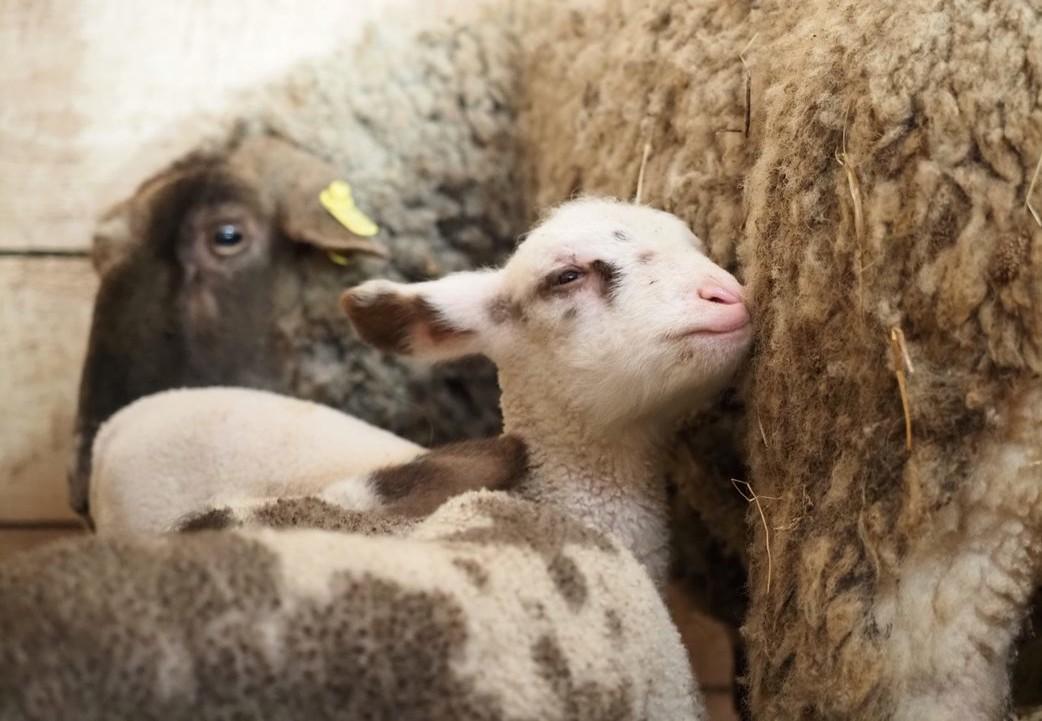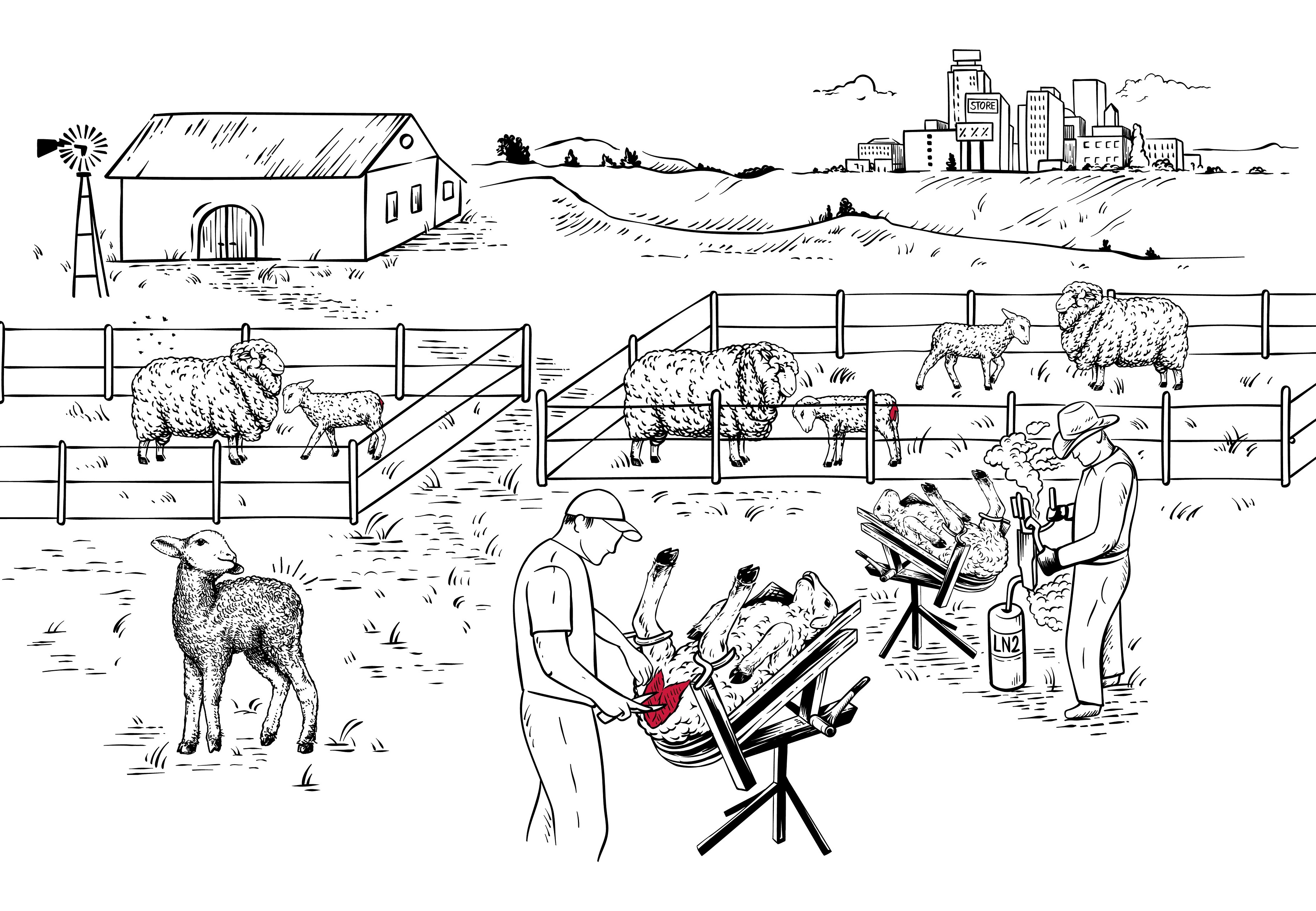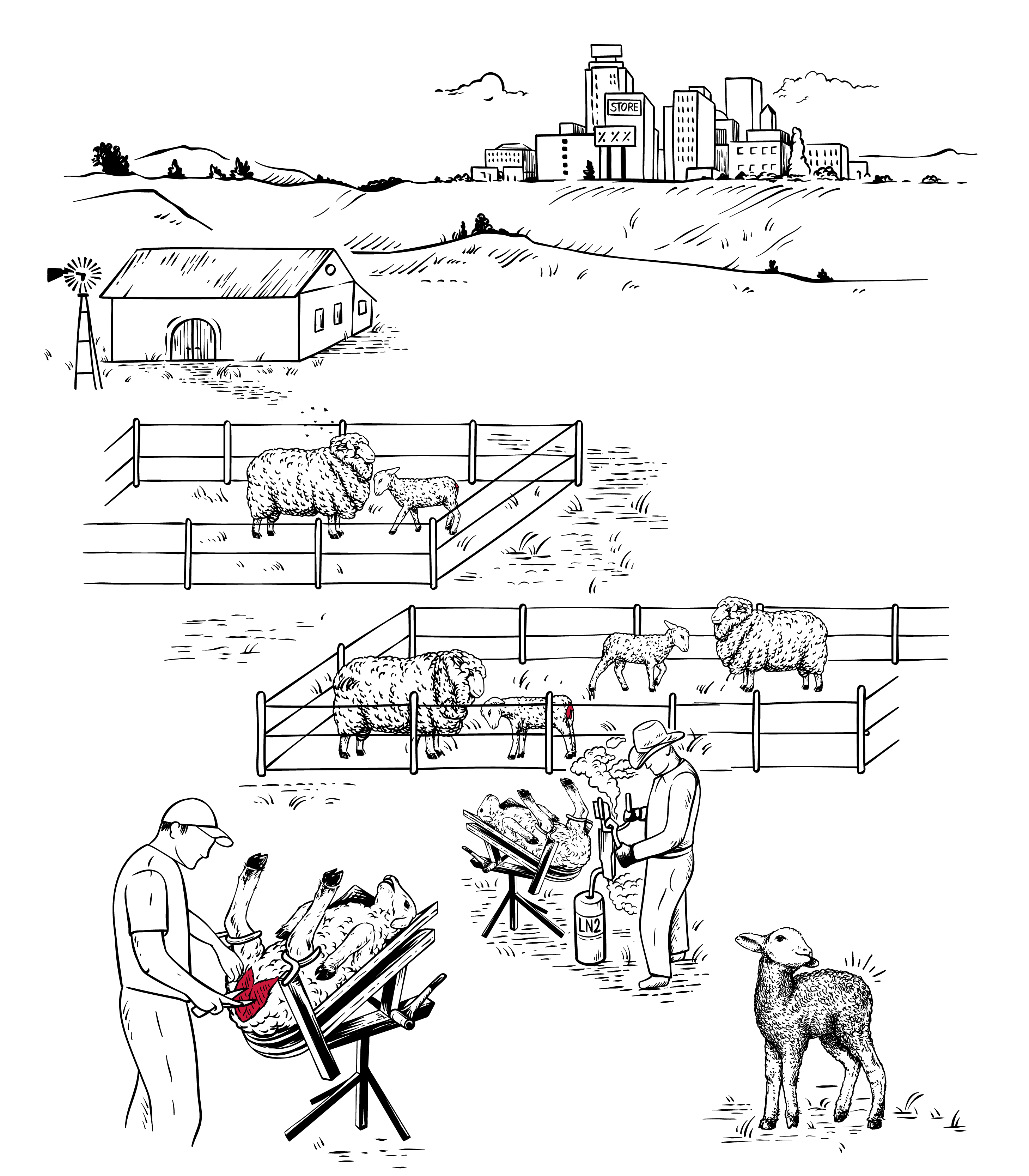
Frequently Asked Questions on Live Lamb Cutting (Mulesing)
Did you know that every year millions of lambs are subject to cruel mutilations for our clothing?


What is live lamb cutting (mulesing) and why is it practiced?
Live lamb cutting is a mutilation where young lambs are restrained on their backs, unable to move or to run away while their skin is removed with sharp metal shears and without adequate pain relief. This brutal practice was invented in the 1920s in Australia in response to regular outbreaks of flystrike. Lamb cutting is painful and traumatising for the animals. Flystrike itself is an animal welfare issue where blowflies lay their eggs in sheep’s skinfolds which leads to an infestation. Blowflies exist all around the world, however, the Australian climate and overbred sheep with excessive skin folds are the ideal environment for these flies. Blowflies are particularly attracted to skinfolds that retain moisture, especially faeces and urine. For that reason, the areas primarily affected are around the buttocks. Live lamb cutting (mulesing) of young lambs is cutting off the skin folds around the buttocks to leave a bare area where no wool and no wrinkles grow for flies to lay their eggs in.
The procedure is performed annually without adequate pain relief on over 10 million lambs in Australia and it does not even solve the problem of fly infestation. Flies can still lay eggs in other skin folds on the sheep’s body (so called 'bodystrike').
Mulesing, named after its creator John Mules, is an outdated term for an outdated and archaic practice. This terminology fails to describe the practice and, as a result, hides the cruelty involved. Animal protection organisations, including FOUR PAWS, are referring to the practice of mulesing as 'live lamb cutting' and encourage the industry to use terminology that accurately reflects the situation.
What is the solution and what does 'wool with a butt' mean?
The solution is good farm management and transition to available and more flystrike resistant sheep genetics in order to produce wool free of live lamb cutting or wool with a butt, as we like to call it. In other words, instead of cutting off a lamb’s wrinkly skin around the butt, sheep can be bred without excessive wrinkles. These animals are more resistant and render live lamb cutting unnecessary.
The widely spread myth that more wrinkly sheep grow more, and higher quality wool led to the overbreeding of merino seep in Australia and consequently to breeding animals who are highly susceptible to flystrike. The pain-free and available solution is for wool growers to transition to sheep without excessive wrinkles and for brands to source certified wool free of lamb cutting or the so-called wool with a butt.
More than 3,000 Australian wool growers work with these types of sheep and therefore do not practice lamb cutting. According to wool growers that have stopped lamb cutting, transitioning to more flystrike resistant genetics takes only 3-5 years and does not result in any loss in wool amount or wool quality, while increasing animal welfare. Find out more!
What goal does FOUR PAWS pursue by this campaign and what can I do to help?
FOUR PAWS wants to end the cruel and outdated practice of live lamb cutting once and for all. We are raising awareness about the problem and the available pain-free solutions and we essentially want brands to commit to a complete phase-out of mulesed wool from their product range. We therefore need YOUR help!
Check out our list of brands who are against live lamg cutting (mulesing).
By signing our petition and/or writing directly to the brands who have not committed to go certified lamb cutting-free yet, you can contribute to convincing them to switch. Once brands make that commitment, Australian wool growers will stop live lamb cutting and produce according to the demand. Together we can make a difference for the sheep and spare millions of lambs from being mutilated for their wool in the world’s biggest wool producing country – Australia.
What should I pay attention to if I want to buy wool free of lamb cutting?
You can check a brand’s website or our brands list to see if brands have published a stance against live lamb cutting or even a commitment to phase out wool free from lamb cutting in the next years. If you can’t find any of that, it is best to ask the brand directly!
If the brand does not publicly speak out against lamb cutting or has no reliable certification in place (such as Responsible Wool Standard (RWS), NATIVA and ZQ Merino or equivalent) ask them to make a commitment to go certified lamb cutting-free by signing our petition and/or by writing to them directly.
We want brands to commit to reliable wool certifications and to communicate their decision publicly in order to send a clear signal to the Australian wool industry to produce live lamb cutting-free.
What brands offer lamb cutting-free clothing?
There is an increasing number of brands who do not want to source lamb cutting-wool and have publicly spoken out against that cruel practice. For that reason, we have set up a list which is continuously growing and consists of already over 400 internationally well-known brands who are against lamb cutting. This enables higher market transparency and helps people to look up their favourite brands to make an informed purchase decision.
You can check out our brands list here. If you know more brands who have a public stance against lamb cutting (on their website, in their stores or on their products), you can contact us here to provide us with the respective information. We will then upload it and categorise it as either position against lamb cutting (also known as mulesing) or the more progressive category of commitment to phase out wool from live lamb cutting.
What can brands do to help the sheep from which they are sourcing the wool for their fashion?
Brands must speak out publicly against lamb cutting (on their website, in their animal welfare policy, etc.) and translate that position into action by committing to a step-by-step phase-out of mulesed wool from their supply chains. Working with and relying on transparency and traceability systems such as the Responsible Wool Standard (RWS), NATIVA and ZQ Merino or equivalent is essential to guarantee that the wool is lamb cutting-free and hasn’t been mixed up with wool from live lamb cutting along the supply chains.
How has FOUR PAWS contributed to increase animal welfare in the fashion industry?
Working collaboratively with other animal protection organisations and the fashion industry itself, while campaigning for change alongside its supporters, fashionistas and consumers, FOUR PAWS has effectively moved the industry to better care for animals. Since 1988, we have advocated for animals who are abused for fur, and now, more broadly said, for fashion. Most recently, we successfully encouraged almost all major European brands to end their use of down from live-plucked or force-fed geese.
FOUR PAWS brings its expertise into play, being the voice of the animals and helping to raise the bar within internationally recognized textile certification standards by promoting sustainable solutions.
Aren't there animal welfare laws protecting lambs from being mulesed?
While Australia's neighbour New Zealand has prohibited live lamb cutting by law in 2018, lamb cutting is widely practiced in Australia itself, more than 10 million lambs being mutilated through this cruel practice each year.
While FOUR PAWS is calling for better animal welfare laws, effective legislation can take decades to achieve and implement. That’s why we need brands to be transparent, thereby enabling consumers to make the right decision today. The animals can no longer wait!
What is the difference between transparency and traceability in relation to animal protection and certified wool free from lamb cutting?
Transparency to enable better animal welfare standards includes operating in such a way that consumers can easily spot how a brand or retailer values and ensures animal protection. For example, brands should publish effective animal protection or welfare policies, as well as information about what standards of care are being applied.
Traceability has the capability to backtrack something such as wool within a supply chain, keeping track of and sharing its credentials, e.g. its origin and the standards applied.

